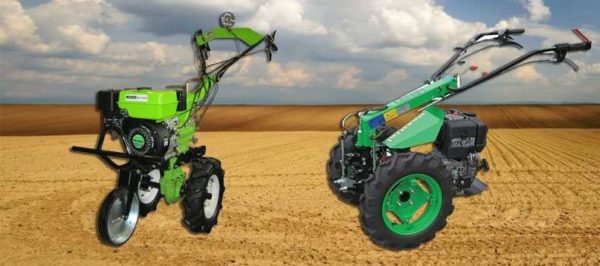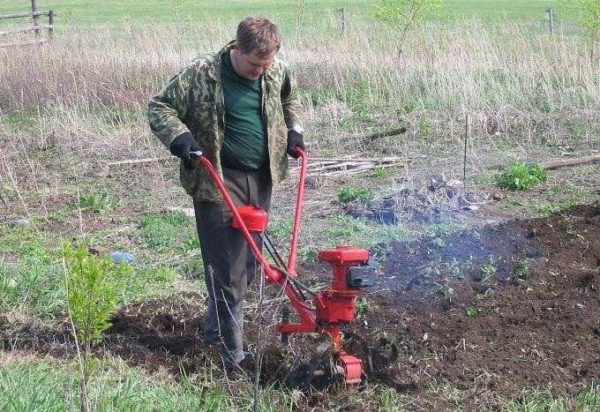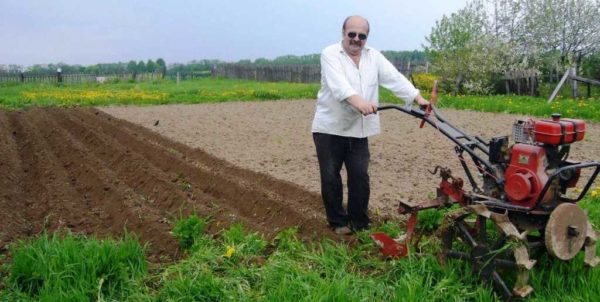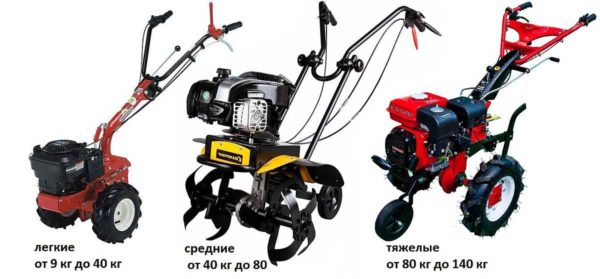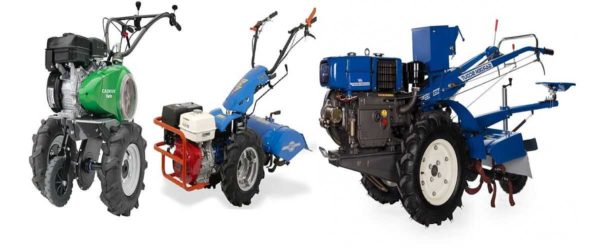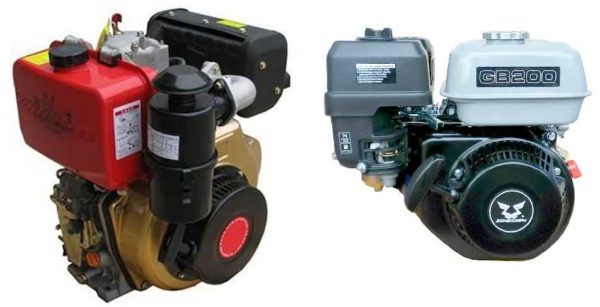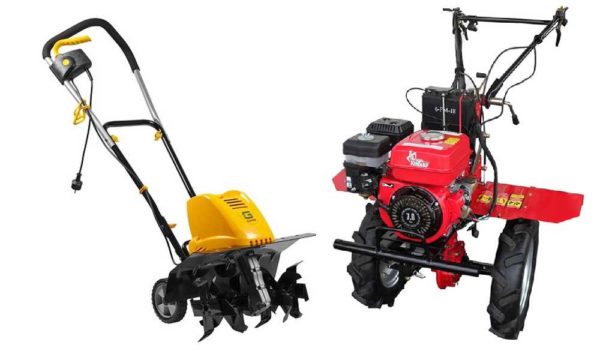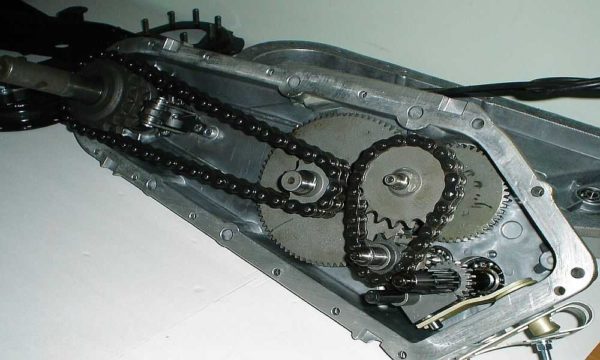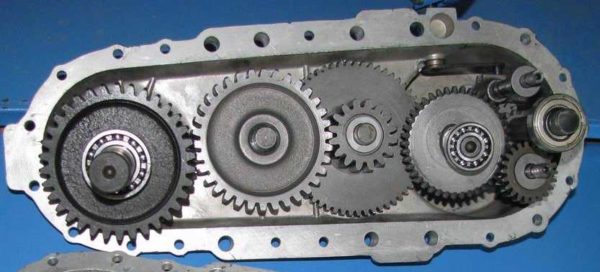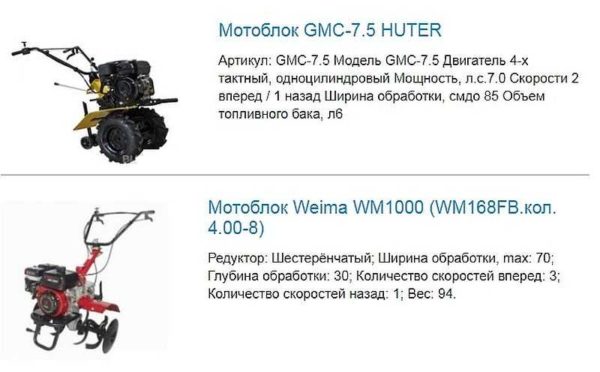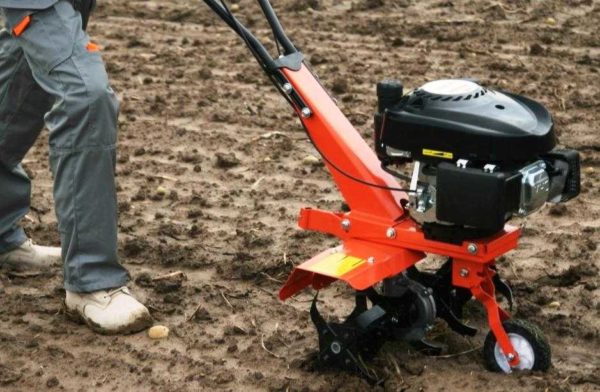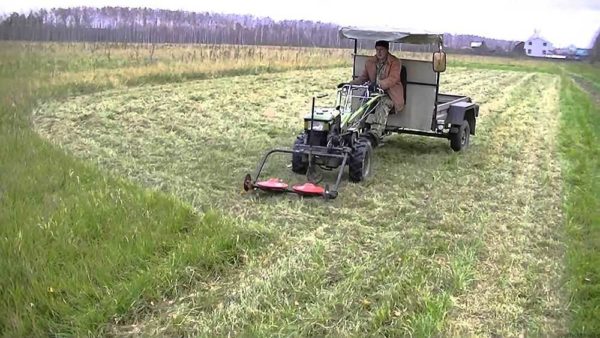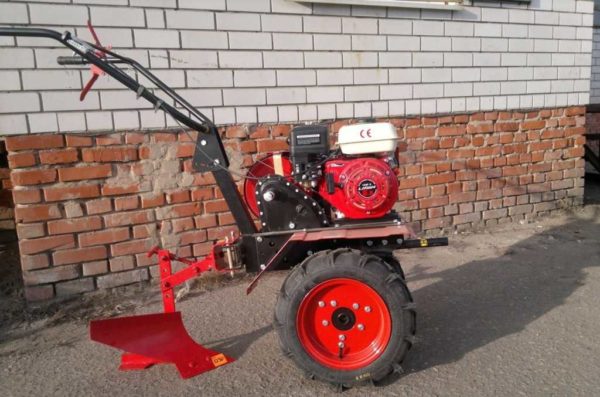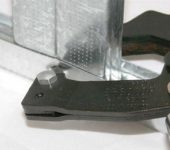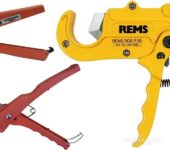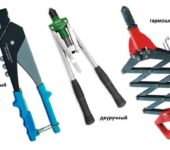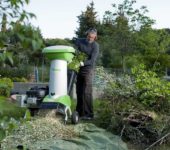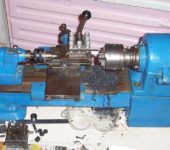Which walk-behind tractors and motor-cultivators are better
In order to make it easier to cultivate land plots, it is necessary to use equipment and special devices. It's not just a super shovel. With her, of course, it's easier, but it still requires a lot of physical effort. It is much easier to work if you use walk-behind tractors and motor-cultivators. They are, of course, expensive, but they are worth their price.
The content of the article
Motoblocks and cultivators: what is the difference
Working on the ground requires considerable effort. Modern technology can greatly simplify this difficult work. For example, walk-behind tractors and motor-cultivators will facilitate plowing, weeding, hilling and some other operations. The main difference between a motor-cultivator and a walk-behind tractor is the power and the number of operations that they can perform.
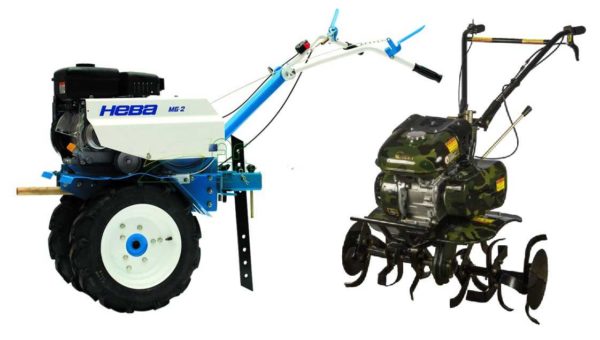
They are similar in purpose, but differ in power, the number of operations performed, the depth of cultivation.
Motorized cultivators are small lightweight devices with a capacity of 3-6 horsepower. The main purpose is loosening the soil with a cutter. Other operations and work with other implements is possible, but not on all models and not on all soils.
Motoblocks - more powerful devices - from 7 hp - with a wide range of functions. They can cope with plowing (working with a plow), loosening (milling cutter), hilling, mowing grass, etc. As an additional function - the ability to transport goods or move a small trailer.
What to choose
How to choose what to buy? Which is better, walk-behind tractors and motor-cultivators? Depends on the size of the plot that you plan to cultivate, the list of works that you want to automate, the soil on the plot.
Where and for what it is better to use motor cultivators
For a summer residence, a garden, a vegetable garden with an area of up to 10-15 acres, a motor-cultivator is quite enough. Especially if the soil is light. Loosening the soil and cultivating row spacings this device performs well, but works, as a rule, at the same speed. Only some, more expensive models can have two speeds, even less often there is an opportunity to change the direction of travel (reverse).
The main equipment is cutters. For different row spacing, they are of different sizes. Replacing the cutter takes a little time, which is convenient. Only the heaviest and most powerful (read - expensive) models can handle plowing, and even then, on light and medium soils. Moreover, we are not talking about deep processing.
Some owners adapt the tillers to more powerful models. The processing quality is not always high. It is normal only on light soils. Even with preliminary loosening, the row spacing has to be corrected manually. Although the job is certainly much easier.
The wheel, most often, is one - central, solid. That is, during work, it will take some effort to keep the implement in a stable position. In general, a motor cultivator is an excellent choice for a standard summer cottage. Larger areas require more powerful equipment.
Scope of motoblocks
If the area of the cultivated area exceeds 20 acres, it makes sense to buy a walk-behind tractor. In contrast to motorized cultivators, they have several transmission speeds, the ability to reverse.The speeds are usually few, 2-3 when moving forward and 1-2 when moving back.
The number of attachments for motoblocks is greater: in addition to milling cutters, you can put a plow, mower, tiller. Due to the higher power, the soil cultivation is faster, its greater depth is possible. The depth changes by installing weights that lower the cutter or plow below.
Motoblocks have two pneumatic wheels, due to which they are more stable. Efforts during work are minimal, you just have to control the direction.
Division into classes
Motoblocks and cultivators are divided into three classes. The choice of class depends on the type of cultivated soil and the area of the site. Distinguish between light, medium and heavy cultivators and walk-behind tractors.
- Lungs. Suitable for processing light, and previously treated soils. They are characterized by low power and weight, as a rule, they have a small processing area in one pass. These are cultivators for summer cottages, small gardens and vegetable gardens with annual soil cultivation. They are characterized by high maneuverability. But, due to their low weight, one has to make significant efforts to stabilize their position. This is especially true when working with light cultivators - you have to press well so that the cutter remains at the desired depth. It is very problematic to develop new areas with this class of equipment and can lead to rapid wear.
- Average. Suitable for working on medium-dense soils. Due to the more solid weight, processing is possible at greater depths. It can also be used in summer cottages, but it already works well on loams of medium "gravity", fertile soils. Due to the greater weight, the equipment is more stable, does not jump out of the ground during operation. Maneuverability is still high. Mid-range motoblocks are suitable for cultivating plots of up to half a hectare, with motor-cultivators of this type, work goes faster, although they are not designed for processing large areas.
- Heavy. Universal aggregates for processing any kind of soil, including for cultivation of virgin lands. Suitable for transporting crops, for working with other mounted implements (mower). It is advisable to buy if there is more hectare of heavy soils in the processing or two or more of light soils. Due to the greater weight and dimensions, maneuverability is less, but the width of the working band and the possible depth are greater.
In general, it is not difficult to choose walk-behind tractors and cultivators by class. For summer cottages, light and medium models of motor-cultivators are suitable, for farms, walk-behind tractors are more suitable. The class will have to be determined by the soil and the size of the cultivated area.
Engine type and parameters
Motoblocks and motor-cultivators are equipped with an engine. The speed and depth of processing, the ability to work with different types of soil, the size of the tools used depend on its type and power. In general, engine selection is an important issue.
Engine type
Motoblocks and motor-cultivators are available with three types of engines:
- Electrical engine. Small models are equipped with an electric motor for processing plots of 5-6 acres. It is these devices that are ideal for working in greenhouses, where the use of internal combustion engines is impossible due to the closed space. It is also the most inexpensive cultivator for summer cottages. The range of prices is from $ 100 to $ 600. There are very small units with a power consumption of 0.75 kW (-3 horsepower), there are more solid ones - with an engine power of up to 2.2 kW (up to 7 horses). Of the features of the choice - pay attention to the phase of the network (380 V or 220 V), the length of the cord and the type of its fastening.
- Gas engine.Motor-cultivators and motoblocks of light and middle class are equipped with 2-stroke gasoline engines, heavy and some larger medium-sized ones are equipped with 4-stroke ones. When choosing, you need to pay attention to the volume of the engine and its power. The more these parameters are, the more "draft" force the unit has. Prices from 120 to 500 $ (there are also more expensive models, mainly of European production).
- Diesel engine. Models of the middle and heavy class are equipped with diesel engines, and they are installed almost exclusively on walk-behind tractors, and only some cultivators of the heavy class can have such an engine. Engines are mainly 4-stroke, single-cylinder. When choosing, you must also look at the volume of the engine and its power. Prices from 500 to 2000 $.
Most often, a gasoline engine is chosen. Diesel, of course, are more economical during operation, but the price for models with similar characteristics is very different. So most often they choose walk-behind tractors and motor-cultivators with gasoline engines.
Reducer type
A gearbox is a unit that transmits torque to a transmission. The type of gearbox affects the durability of the unit, the level of noise during operation, and the smoothness of speed changes. In general, this is an important knot.
Reducers on walk-behind tractors and motor-cultivators are:
- Worm gear. Common on single-speed gearboxes found on light cultivators. The worm gear is low-noise, features smooth operation and low noise level, high efficiency. The disadvantage is fragility.
- Chain reducer. Suitable for light and medium walk-behind tractors and medium / heavy cultivators. There is a driving sprocket on the motor axis, and a driven sprocket on the working shaft. They are connected by a chain. By changing the gear ratio, the force on the working equipment is changed, so that the force required for each job can be selected. The chain reducer can be collapsible and non-collapsible. In a collapsible one, you can replace worn parts (sprockets). Unbreakable is replaced entirely. The disadvantage of a chain gear is a high level of noise.
- Gear reducer. Consists of a set of combinable gears. Such gearboxes are on medium and heavy walk-behind tractors; they cannot be found on cultivators. The most reliable transmission designed for heavy loads, but also the most expensive. You can't find it in budget models. The disadvantages are expensive service.
Actually, the choice is really small. Cultivators are mainly equipped with worm gearboxes. Only on some, more expensive heavy ones, they put chain ones. Light and medium motoblocks (even budget heavy ones) are equipped with chain reducers and only expensive heavy ones are equipped with gear drives.
Number of speeds
Inexpensive light and medium cultivators do not have a gearbox and always work with the same effort. For simple work of the same type, loosening is normal. More powerful equipment - heavy cultivators and all motoblocks - have a box. The number of speeds - from 2 to 8. The more speeds, the more accurately you can select the effort for a specific job. This ultimately saves fuel.
Even more "advanced" modifications have the ability to change the direction of movement - they can move back. It is convenient in a confined space, but the gearbox is more complicated, its cost is higher. The number of speeds in reverse motion is less - from one to three.
Reverse gearboxes can be mechanical or automatic. Automatic ones change direction while driving, on mechanical ones for reverse, you must first stop, then change gear. It is clear that automatic ones are more complex and cost more (and in maintenance too).
Motor cultivators: selection parameters, which is better, prices, reviews
Let's start with how to choose a cultivator, by what parameters to make a choice.Then we will consider the most popular models, their advantages and disadvantages, prices.
Criterias of choice
The general parameters have already been described above: these are class, power, type of motor, gearbox and the number of speeds. Here we briefly list the main selection criteria and the possible range of parameters. Here's what to look for when choosing a motorized cultivator:
- Direction of rotation of cutters. It happens straight and
- Rotational speed of cutters (for models that operate at the same speed).
- The number of cutters in the set and their dimensions.
- Processing width. From 15 cm to 110 cm.
- Processing depth. 15 cm to 25 cm
- Wheel type. A good option is made of molded rubber, but the best option is hydraulic (they are put on some heavy models).
Pay attention to mass in every class. It varies over a fairly wide range:
- light motor-cultivators - from 9 kg to 40 kg (the lightest - with an electric motor);
- medium - from 40 kg to 80 kg;
- heavy - from 80 kg to 140 kg.
The choice by weight is also not entirely unambiguous. On the one hand, the lighter the mass, the better the maneuverability. On the other hand, the heavier the equipment, the deeper the processing depth (although the relationship is not direct, much depends on the design). Plus the greater mass is that heavier units can be loaded with self-made devices and used in uncharacteristic jobs.
Popular models, reviews, prices
Neva - popular domestic-made motor cultivators (St. Petersburg plant "Red October"). They are designed for the difficult soils that are typical for Russia, so that the cultivators of the middle class are equipped with a gear drive. Additional advantages include a stable design and vibration damping. So it's nice to work, the reviews are 4 or 5 on a five-point scale. The characteristics of some models of Neva motor cultivators are collected in the table.
| Model | Class | Width / depth of tillage | Number and size of cutter | Engine | Power, volume | Number of speeds | Transmission | Price |
|---|---|---|---|---|---|---|---|---|
| Neva MK-80-B6.0 | average | 71-98 cm (depth not specified) | 6 pcs | gasoline, 4-stroke, | 6 h.p. / 163 cc cm | 1 | without box, chain reducer, belt transmission | 420$ |
| Neva MK-80R-S5.0 | average | 60-100 cm / depth 16 cm | 6 pcs | petrol | 5 h.p. / 183 cc cm | 1 forward, 1 reverse | without box, chain reducer | 500$ |
| Neva MK70-B5,0 RS | average | 35-97 cm / depth 16 cm | 6 pcs | petrol, 4-stroke | 3.7 h.p. / 163 cc cm | 1 forward | without box | 380$ |
| Neva MB-S-6.0 | heavy | 65-100 cm / depth 16 cm | petrol, 4-stroke | 6.1 h.p. / 205 cc cm | 4 forward, 2 reverse | mechanics, chain reducer | 620 $ |
There are also domestic Mole cultivators. Under this name, the equipment is produced by the OJSC “MMP im. V.V. Chernyshev "Moscow. Previously, this brand was produced by the Omsk plant named after P.I. Baranov. There are several more Chinese units under the Krot brand. So when choosing, you need to be careful and clarify which manufacturer.
| Model | Class | Width / depth of tillage | Engine | Power, volume | Number of speeds | Transmission | Price |
|---|---|---|---|---|---|---|---|
| KROT MK-1A-02 | average | 35-60 cm / depth up to 25 cm | Air-cooled two-stroke carburetor engine | 2.6 hp | 1 | 420$ | |
| KROT MK-4-03 | average | 60-90 / depth 25 cm | petrol | 4 h.p. | 1 forward, 1 reverse | chain reducer | 390$ |
| Mole MK-9-01 | average | 40-90 cm / depth 26 cm | petrol, 4-stroke | 5.5 h.p. / 168 cc cm | 1 forward, 1 reverse | without box, belt drive | 320$ |
| MOLE MK-455 | average | 60 cm / depth 25 cm | petrol, 4-stroke | 4 h.p. | 1 forward, 1 reverse | worm gear, belt drive | 340 $ |
There are also Russian motorized cultivators of the SoyuzMash plant (Vyatka brand). They are less well-known, they are not in every store. According to users, the quality is about 4.
Motoblocks: which is better, prices reviews
As already mentioned, walk-behind tractors are designed to handle large areas, cope with the development of virgin lands. The main parameters are the same: engine type (gasoline or diesel), transmission type, power, number of speeds.There are also specific, characteristic for this particular equipment.
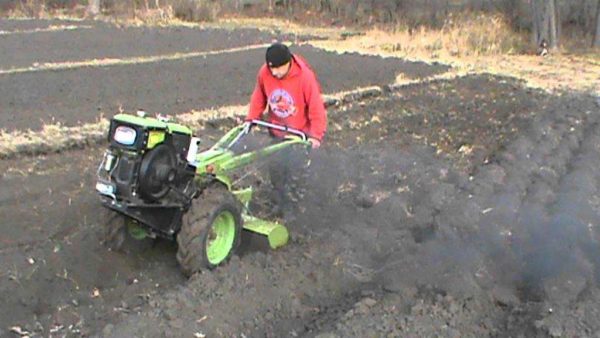
When working with walk-behind tractors, physical efforts are needed to hold in the required position
Criterias of choice
You need to track:
- class,
- tillage parameters (width and depth);
- fuel tank volume;
- type of gearbox (mechanic or automatic).
What else is worth paying attention to is the number of attachments that can be operated with this unit. But this should be clarified with the sellers, since such "trifles" are not written in the technical specifications.
Top models according to reviews
The list has been compiled based on feedback from the owners. The rating includes motoblocks of different classes, but their score is not less than “4” points out of five.
- CAIMAN VARIO 70S TWK +. A motoblock of a light class, equipped with a 7 horsepower Subaru-Robin gasoline engine. The working depth is up to 32 cm. The reliability and stability of the unit, the possibility of using it for plowing virgin lands, transporting goods are noted. The assembly is French, the price is about $ 1000.
- KaDvi Oka MB-1D1M10. Medium walk-behind tractor with a Lifan 168F-2A engine for 6 horsepower. Manual transmission, 2 speeds forward, 2 reverse. Belt driven chain reducer. Good work on the virgin soil is noted, but the gears are shifted tautly, oil leakage is noted. According to reviews - 4. Price - $ 470.
- Neva MB-23B-8.0. Motoblock middle class. Briggs and Stratton 8 horsepower gasoline engine. Manual transmission, 4 speeds forward, 2 reverse, gear reducer. Among the shortcomings indicated are tight gear shifting and the absence of an electric starter. The rest of the work is normal. Price - $ 880.
- Salute 100-6.5. Light class, Lifan 168F-2B engine with 6.53 horsepower. Mechanical transmission with two forward and one reverse speeds. The reviews indicate good "torque", easy start, confident maneuverability. Price $ 500.
These are not all walk-behind tractors and motor-cultivators. Only those that caught my eye and had good reviews.

